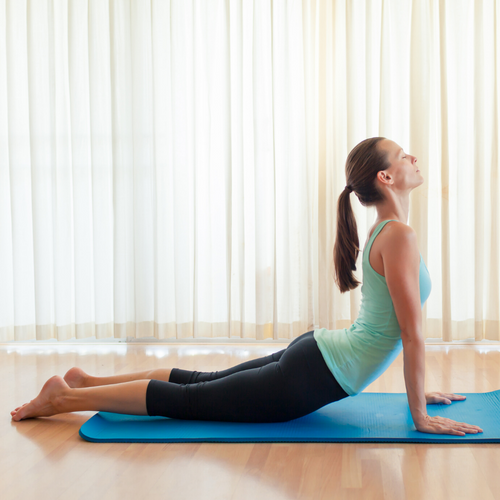Hey mamas! This week, we’re here to remind you that our bodies are AMAZING. They create life and work hard to keep us going, so we can continue tackling the challenges and feats of motherhood every day. That means that it’s super important to take care of our bodies by fuelling them with nutritious food and exercising (when we can)! Not only does being active benefit us physically, but it also improves our mental wellbeing.
Of course, it can be hard to find the time or energy to work out as much as you’d like, especially after going through the difficult journey of pregnancy and you have a new baby to look after. As long as you’re doing the best you can, that is enough! This week, we’ll be going through some common questions that you might have about starting exercise after pregnancy.
Why should I exercise after birth?
There are plenty of reasons why you might want to start exercising after birth – there are just so many benefits to it! Exercise can help your body recover from labour by strengthening and toning your muscles, as well as improving your general level of fitness. It’s also a great outlet to help relieve stress and improve mental wellbeing! When we exercise, our bodies produce endorphins that can trigger positive feelings and improve our moods. It can also help boost our energy levels, letting us recharge to better care for our little ones. Finally, exercise can also improve our quality of sleep – and we all know how precious that is when living with a new baby!

How soon can I exercise after birth?
As a very general rule of thumb, it is recommended to wait six weeks before exercising again after vaginal delivery and eight weeks if you have had a caesarean section. Of course, every pregnancy is different. Some women find they may be able to do super gentle exercises just days after birth – so be sure to check with your medical professional to make sure you’re in the clear before you begin!
Always start by taking it slow. Don’t exert yourself – your body has just given birth to a beautiful new baby after all, and is in the journey of recovering. If you experience any pain whatsoever, you should stop immediately and consult your doctor.
How does my body change after pregnancy?
While we are pregnant, our bodies change and adapt to help carry the new life inside of us. Sometimes, the hormones produced during pregnancy can linger in our bodies for a while postpartum, as our bodies slowly return to their normal states. This includes the hormone relaxin, which softens ligaments and joints during pregnancy in preparation for childbirth. Relaxin can stay in our bodies for up to six months postpartum and can lead to wobbly, unstable joints – putting us at higher risk for injury during this period. This reinforces how important it is to be careful and gentle with yourself during this time!
Many mothers also commonly find that their pelvic floor is weaker after pregnancy – especially after having a large baby or if their delivery took a long time. The pelvic floor includes the muscles and ligaments that support the bladder, uterus and bowel – hence why we hear so many stories of bladder control issues after birth! Although it might seem embarrassing, this is completely normal. One way of strengthening your pelvic floor muscles is to start incorporating a kegel routine. Don’t put too much intra-abdominal pressure on your pelvic floor with crunches or ab exercises – this can prevent healing.

What kind of exercises can I do after giving birth?
If you want to get back into fitness after pregnancy, start by focusing on low-impact exercise. This includes things like walking, stretching and very light strength training. Don’t push yourself too much, because your body has already done a lot over the past nine months!
You could start by taking a short 5-minute walk, and seeing how you feel afterwards. If there is no bleeding or pain, you can gradually increase the length of your walk and go from there – 6 minutes the next day, 7 minutes the day after, and so on. Once you have built up your strength and abilities, you may want to look at trying out some different forms of gentle exercise. Barre, yoga, pilates and water aerobics are all excellent options for the postpartum period, without causing too much strain on your body. You can also exercise from the comfort of your own home, with specially designed postpartum workout videos found online.

How do I look after myself while exercising post-pregnancy?
If you are breastfeeding your baby, your body will need 500 calories a day more than before conception, so you can keep producing milk! As a result, it’s important that you make sure you are eating enough, with a diet filled with plenty of healthy whole foods. It’s also vital during this time to drink plenty of water – and even more if you are exercising – so you stay hydrated.

Should I be concerned about exercising after pregnancy?
The best way to recognise if there is anything wrong is to listen to your body. Pay close attention – are you comfortable? Is the exercise too difficult? How long does it take for you to recover? Is there any bleeding, or any aches and pains? If something doesn’t feel right, always consult a doctor.

